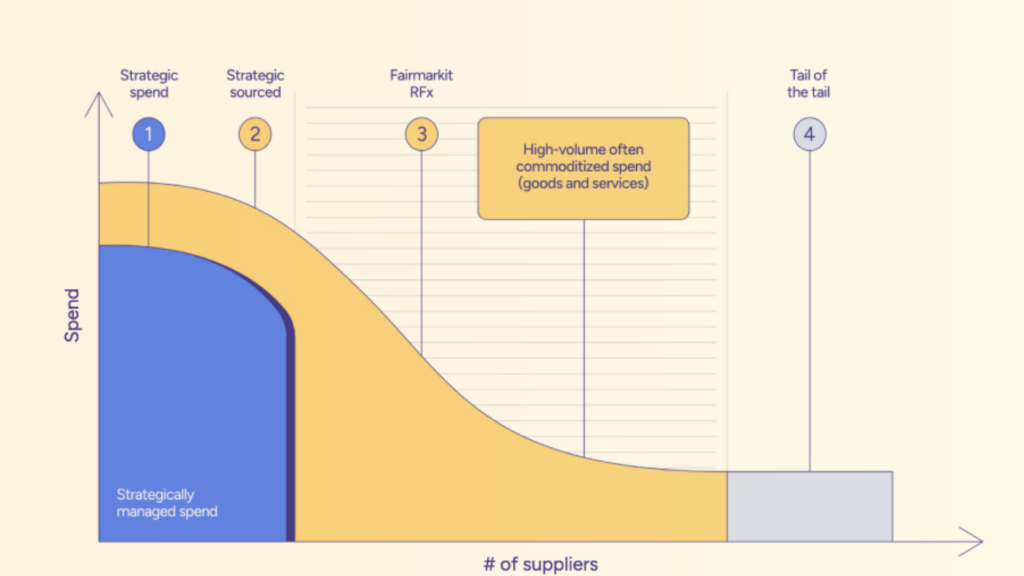Tail spend — a phrase that might sound trivial or insignificant to the uninitiated but holds immense importance in the world of procurement. This article will enlighten you about this critical aspect of spend management, its challenges, benefits, and effective strategies to manage it. So, sit back, grab a cuppa, and let’s dive into the comprehensive world of
tail spend.
So, What is Tail Spend?
Tail spend represents the minor, often overlooked expenditures that a company incurs. These could be infrequent, low-value, high-volume transactions that, whilst small individually, can amass a substantial total when combined. This spend usually falls outside the purview of standard procurement processes due to their nature and volume.
Here’s an interesting fact: Tail spend is often correlated with the Pareto Principle, otherwise known as the 80/20 rule. This suggests that around 80% of an organization’s spend is associated with just 20% of its suppliers. Conversely, the remaining 20% of spend (largely constituting tail spend) involves 80% of the suppliers.
What constitutes a tail spend?
Tail spend comprises a wide range of small, low-value, high-volume transactions, often characterized by their decentralized and unstandardized nature. Identifying these expenses is crucial for effective management and cost optimization.
Here are some of the most common examples and categories of tail spend.
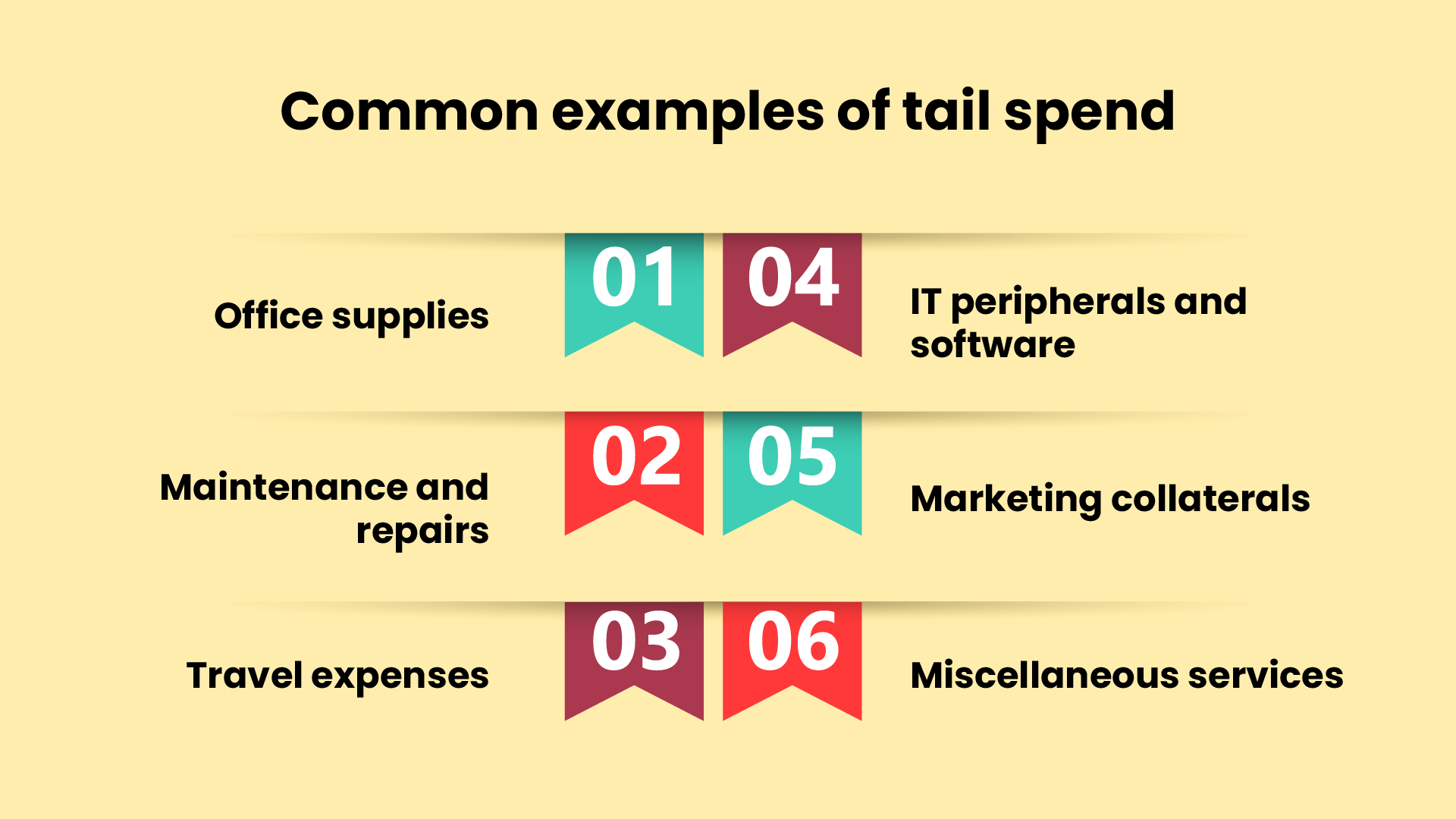
What makes these examples constitute tail spend is the fact that they often lack centralized procurement and standardized processes. Due to their low individual values, they are not a priority for traditional procurement methods.
However, when analyzed collectively, they can account for a significant portion of a company’s spending.
Challenges and impact of unmanaged tail spend
Effectively managing tail spend, with its numerous small, low-value transactions, presents several unique challenges for businesses. These obstacles arise due to the decentralized nature and low individual value of these purchases.
Some of the key challenges include:
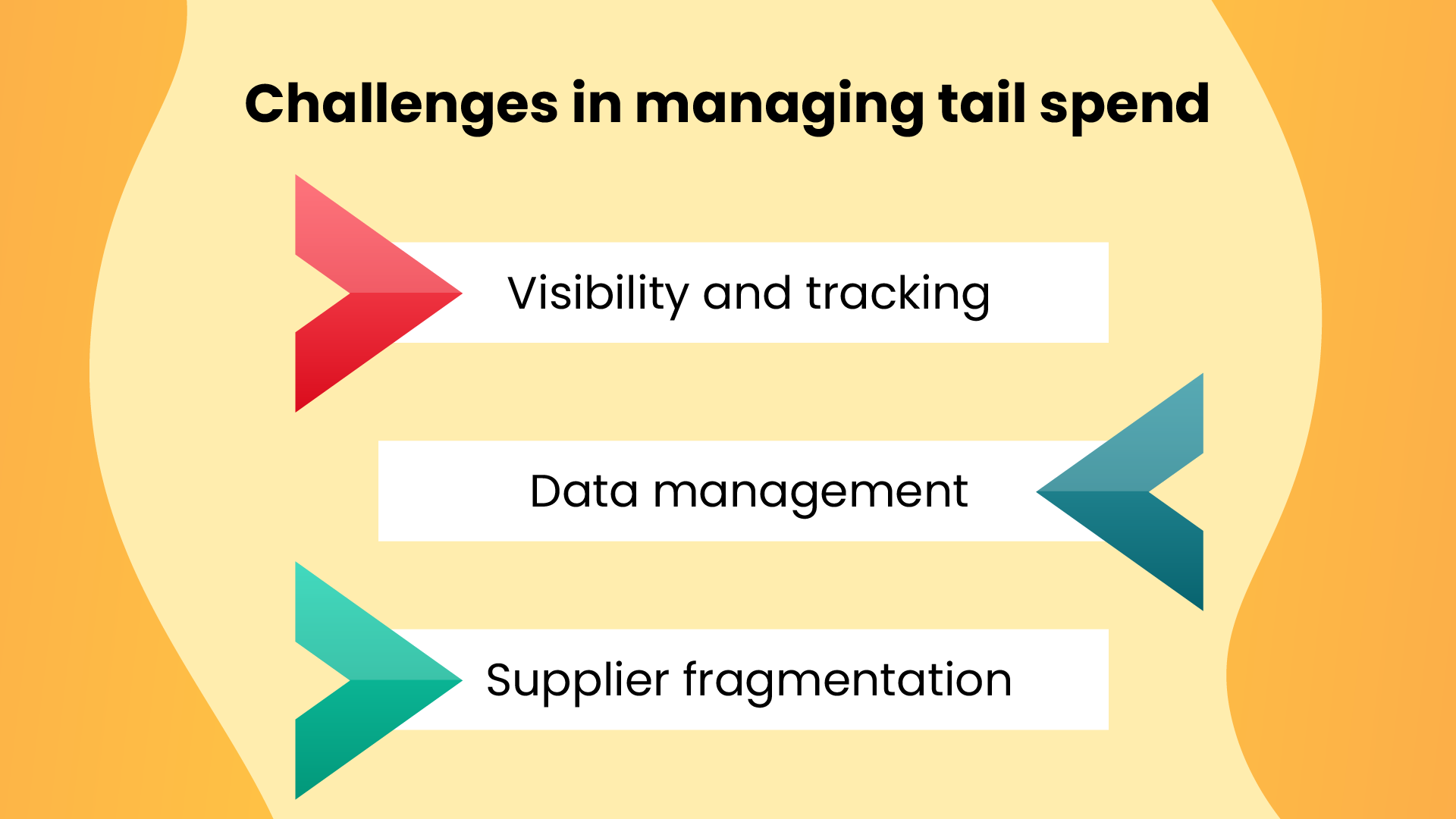
These challenges can have significant repercussions on a company’s bottom line. The impact of unmanaged tail spend can be felt in various areas:
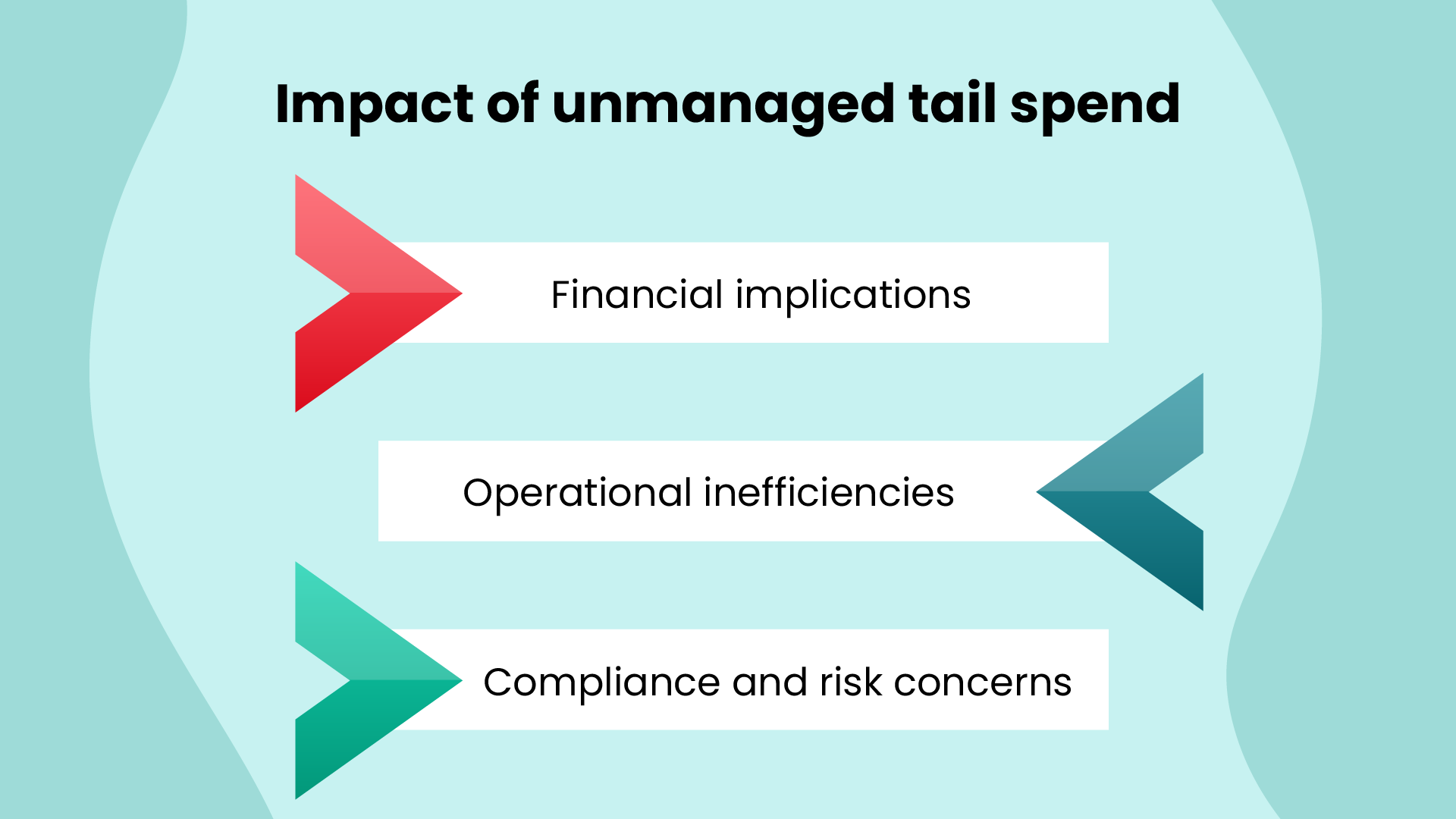
Tail spend management and its benefits
Tail spend management refers to the systematic approach of actively controlling and optimizing the numerous small, low-value transactions that collectively constitute a significant portion of a company’s overall spending.
This process involves identifying, consolidating, and streamlining these decentralized purchases to achieve cost savings, improved efficiency, and enhanced procurement practices.
With tail spend management comes a variety of benefits for businesses.
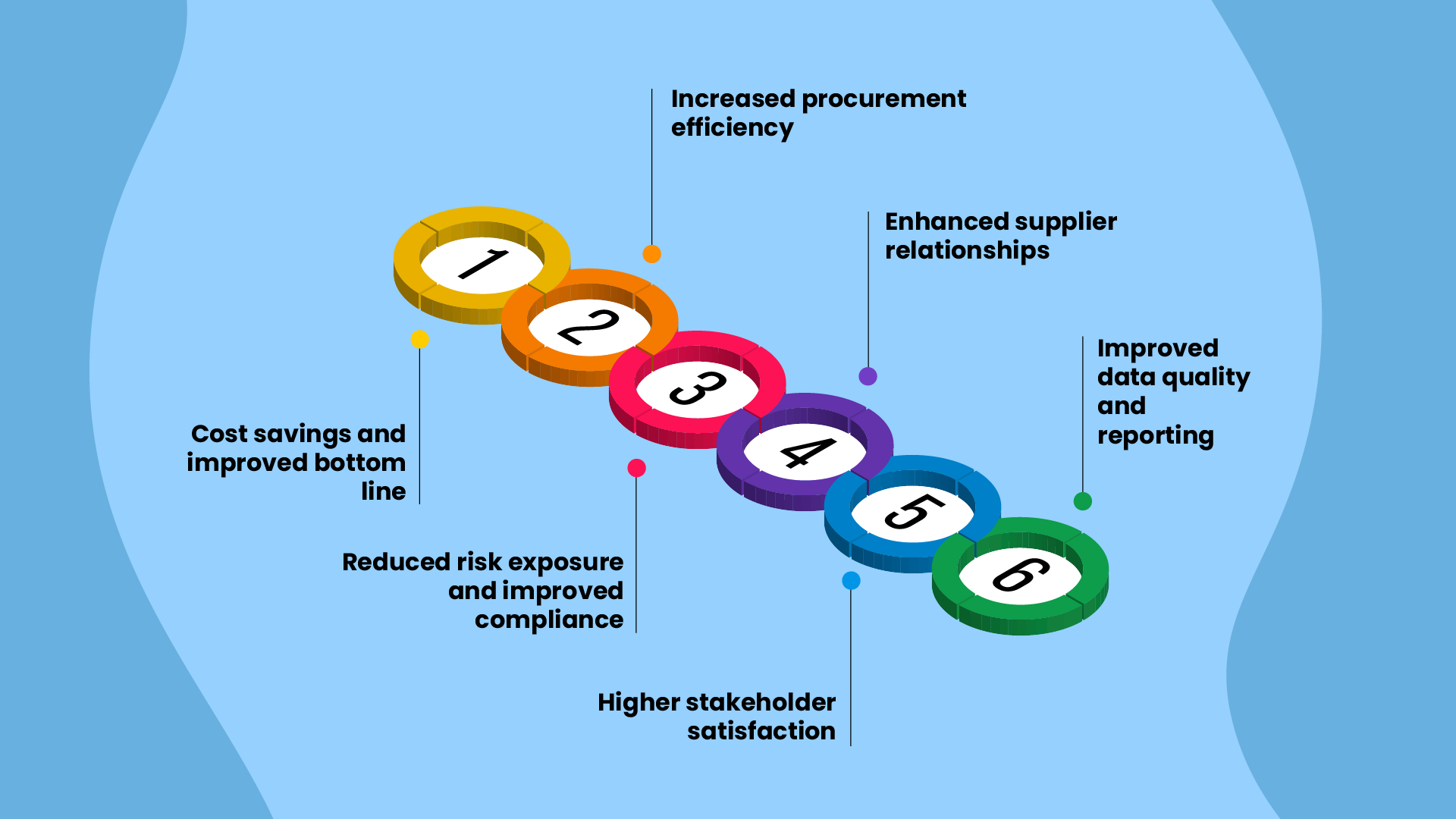
1. Cost savings and improved bottom line
Effective tail spend management enables businesses to identify cost-saving opportunities that might otherwise go unnoticed. By consolidating purchases and negotiating favorable terms with suppliers, the cumulative impact of these cost reductions contributes to a significantly improved bottom line.
2. Increased procurement efficiency
Standardizing and automating processes for tail spend reduces administrative burdens and ensures efficient purchasing. By establishing clear procurement guidelines and centralizing supplier management, businesses can save time and resources, allowing procurement teams to focus on more strategic initiatives.
3. Reduced risk exposure and improved compliance
Tail spend management facilitates adherence to company policies and industry regulations. By implementing tighter controls and approval processes, businesses can minimize the risk of non-compliant purchases, leading to a more secure procurement environment.
4. Enhanced supplier relationships
By focusing on strategic suppliers and consolidating purchases, businesses can improve communication and collaboration. This strengthens supplier relationships, leading to more reliable partnerships and reduced supplier risk.
5. Higher stakeholder satisfaction
Tail spend management enhances the experience for internal stakeholders, such as employees, who benefit from streamlined procurement processes and access to quality products and services. This can lead to increased satisfaction and productivity within the organization.
6. Improved data quality and reporting
Centralizing tail spend data provides better visibility and insights into spending patterns. Accurate and reliable data enables data-driven decision-making and strategic planning, empowering businesses to make informed choices.
Other benefits
A few other benefits of tail spend management include:
- Enhanced budget control and forecasting accuracy allow businesses to allocate resources more effectively and plan for future expenditures.
- Streamlined invoice processing and payment cycles improve cash flow and reduce delays in supplier payments.
- Identification of rogue or duplicate spending helps in eliminating wasteful expenses and preventing fraud.
- Increased focus on strategic procurement initiatives enables businesses to invest in long-term supplier partnerships and innovation.
- Optimization of inventory levels and stock management leads to better control over stock replenishment, minimizing excess inventory costs.
How to effectively manage tail spend
Effectively managing tail spend requires a structured and strategic approach. By following these essential steps, businesses can unlock the full potential of their tail spend optimization.
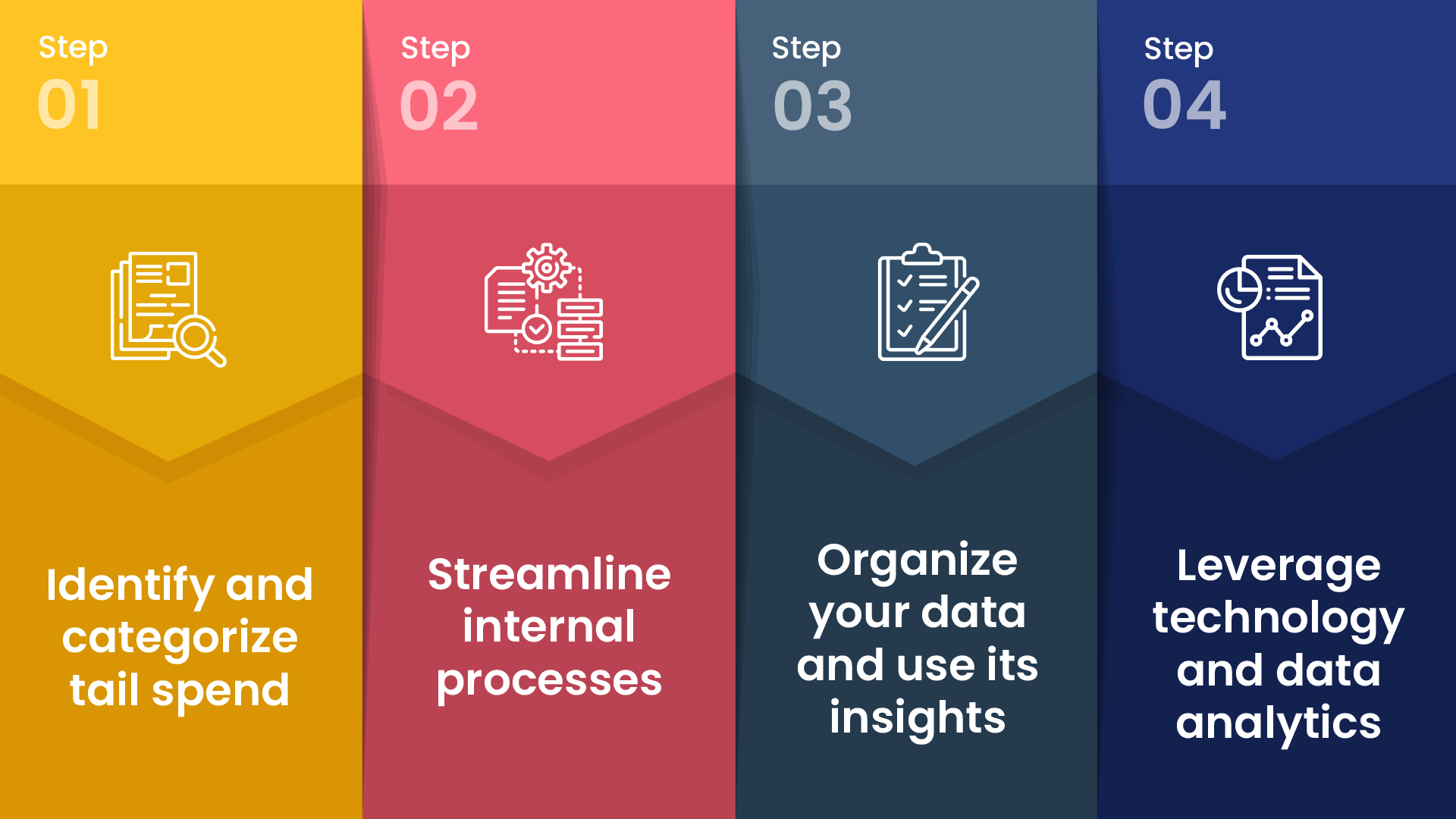
Step 1 – Identify and categorize tail spend
The first step is to identify tail spend transactions and categorize them based on their nature and value. This provides a clear understanding of the various expenses contributing to tail spend and their collective impact on your finances.
Implement spend analysis tools and techniques to identify low-value transactions scattered across departments. Categorize the spend into relevant groups, such as office supplies, maintenance services, or marketing collaterals.
Break down the tail spend so you can prioritize your focus areas and allocate resources accordingly.
Step 2 – Streamline internal processes
Centralizing and standardizing procurement processes is essential for tackling tail spend challenges. Streamlining internal processes ensures consistency, efficiency, and better control over purchasing activities.
Establish clear procurement policies and guidelines that govern tail spend. Encourage employees to follow standardized procedures for purchases within specified thresholds. Implement a robust approval system to ensure compliance with company policies and budgets.
Streamlining these processes helps you reduce maverick spending and increase process efficiency.
Step 3 – Organize your data and use its insights
Data is a powerful tool in tail spend management. Organizing and analyzing data allows businesses to gain valuable insights into spending patterns, supplier performance, and potential cost-saving opportunities.
Invest in procurement technology that enables data consolidation and visualization. Utilize spend analysis tools to track tail spend transactions and identify trends or anomalies. Analyze supplier performance data to evaluate their reliability and contribution to tail spend.
Leveraging these insights means you can make informed decisions and drive strategic procurement initiatives.
Step 4 – Leverage technology and data analytics
Technology and data analytics play a crucial role in managing tail spend efficiently. They enable businesses to streamline processes, improve data accuracy, and identify areas for optimization.
Adopt procurement software and analytics tools that facilitate spend visibility and supplier management. Automate procurement processes, such as purchase requisitions and approvals, to reduce manual errors and save time.
Utilize data analytics to identify cost-saving opportunities, negotiate better contracts, and monitor compliance.
By harnessing technology and data analytics, businesses can achieve greater cost control and enhance overall procurement efficiency.
Implementing these steps empowers businesses to achieve significant cost savings, increase operational efficiency, and build stronger supplier relationships, ultimately contributing to improved financial health and competitiveness.
Wrapping Up
Tail spend, although often overlooked, holds immense potential for cost savings and efficiency improvements. Effectively managing tail spend can not only boost an organization’s bottom line but also improve strategic purchasing capabilities and supplier relationships.
Here at Zapro, we believe in empowering businesses with the tools and knowledge to take charge of their spend management. With our expertise in tail spend management, we can help you navigate the complexities of procurement and unlock significant savings. Let’s embark on this journey together and make your procurement process as smooth as possible!
